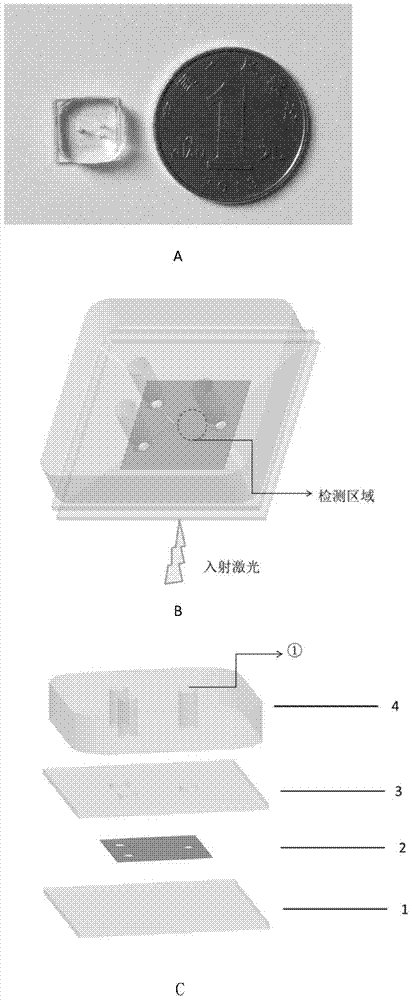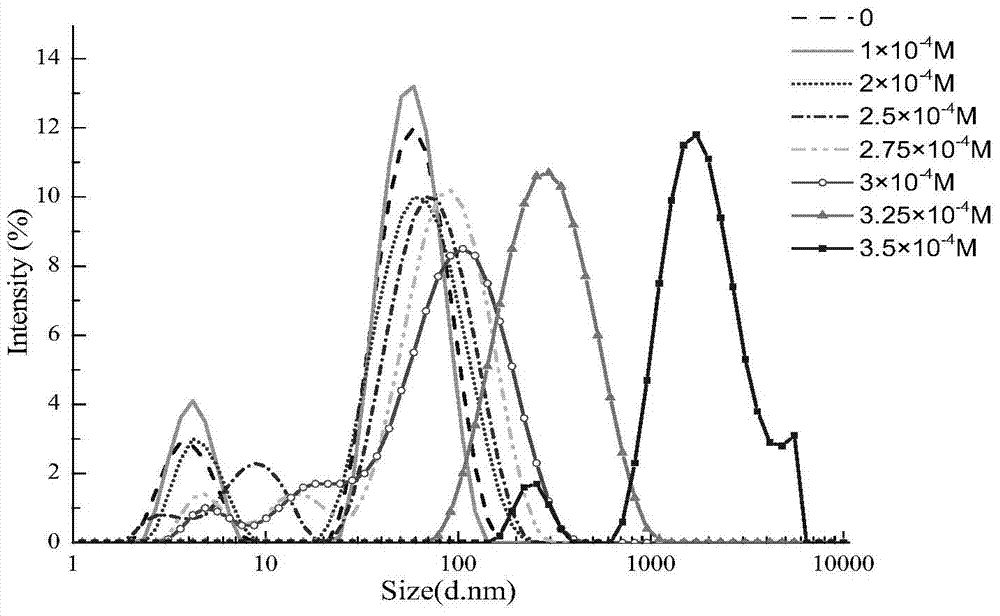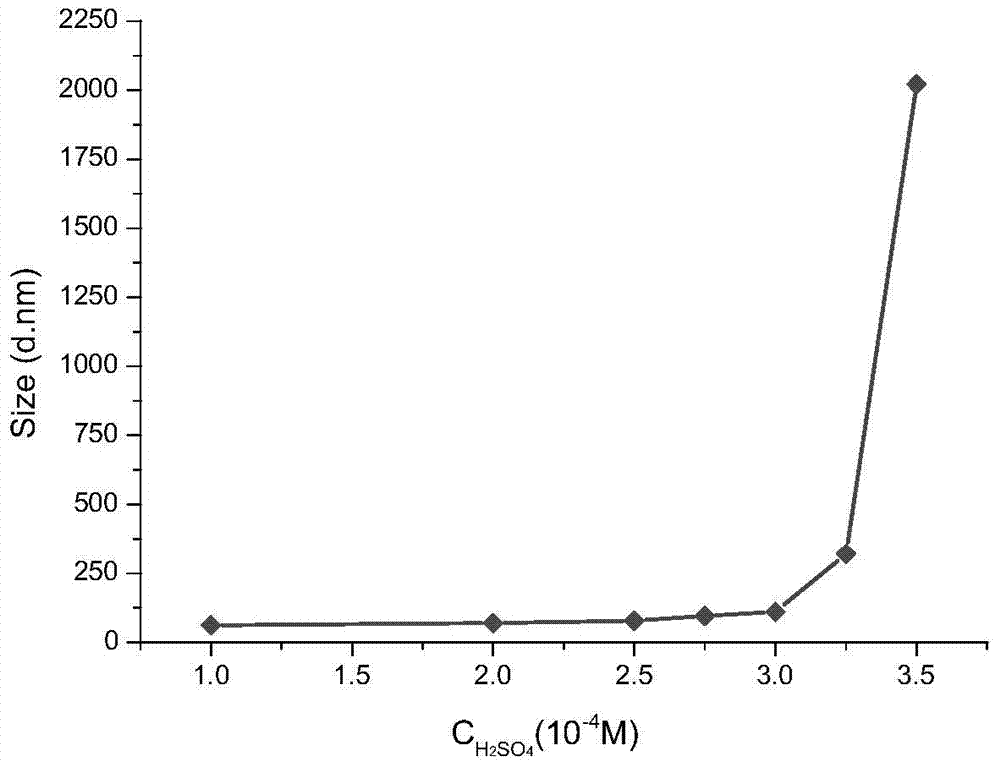A kind of microfluidic chip for sol method sers detection and its application method
A microfluidic chip and detection method technology, applied in the field of analytical chemistry, can solve the problems that cannot be used for Raman quantitative or semi-quantitative analysis, low repeatability of Raman detection of nanoparticle solution, etc., achieve low cost, expand application, time-consuming effect
- Summary
- Abstract
- Description
- Claims
- Application Information
AI Technical Summary
Problems solved by technology
Method used
Image
Examples
Embodiment 1
[0033] Prepare the chip for Raman detection, as attached figure 1 As shown, it consists of a backsheet, a film layer, a cover sheet, and a top layer.
[0034] The processing method of the chip: (1) choose a 1cm×1cm×300μm quartz plate as the bottom and cover, and use a laser engraving machine to process three round holes with a diameter of 0.5mm on the cover; (2) use the ultraviolet exposure method to prepare SU-8 photoresist mold, the mold is a raised Y-shaped channel with a height of 30 μm and a width of 50 μm; (3) Add the PDMS precursor dropwise on the SU-8 mold, cover with flat glass, pressurize, 115 Heat at ℃ for 15min to cure, and remove the cured PDMS film with adhesive tape; (3) activate the quartz plate and PDMS (polydimethylsiloxane) film under oxygen plasma, bond, remove the tape, and obtain a bonded (4) Align and bond the cover sheet and PDMS / quartz sheet after oxygen plasma activation, as the main body of the chip; (5) Make three holes with a diameter of 0.75mm in...
Embodiment 2
[0041] with 2x10 -5 M adenine and 6x10 -6 A mixed solution of sodium 4-mercaptophenylacetate (volume ratio 1:1) was used as the analyte. DSL test, the optimum acidity is 0.01M. In 100 μl Au@SiO 2 Add 100 μl of the solution to be tested and 50 μl of 0.01M sulfuric acid solution into the nanoparticle solution, mix well, then add 50 μl of equivalent NaOH solution, mix well, and flow into the chip from the hole of the chip at a speed of 300 μl / hr for detection .
[0042] As a control, in 100 μl Au@SiO 2 Add 100 μl 2x10 to the nanoparticle solution -5 M adenine and 6x10 -6 Mix solution of M4-sodium mercaptophenylacetate (volume ratio 1:1), and 50 μl 0.01M sulfuric acid solution, mix well, then add 50 μl equivalent NaOH solution, mix well, put it in a quartz cuvette for Raman detection.
[0043] Figure 6 The characteristic peak of 6 adenine Raman spectra in 50 measurements is 736.586cm -1 With 4-mercaptophenylacetic acid sodium characteristic peak 1076.26cm -1 Ratio curv...
Embodiment 3
[0046] Reagent 1: the concentration is 1x10 -4 M's 4-Mpy solution and a 10-fold concentrated solution of SHINERS particles;
[0047] Reagent 2: Concentration of sulfuric acid solution: 1.0×10 -4 M, 2.0×10 -4 M, 2.5×10 -4 M, 2.75×10 -4 M, 3.0×10 -4 M, 3.25×10 -4 M, 3.5×10 -4 M.
[0048] Reagent 1 and reagent 2 flowed in from the first inlet and the second inlet of the chip respectively at a constant flow rate through a syringe, and observed the adherence condition under a microscope. The results show that when the acidity is less than a certain value, Raman peaks with a certain intensity can be generated, and there will be no agglomeration and no adhesion on the chip wall.
PUM
| Property | Measurement | Unit |
|---|---|---|
| height | aaaaa | aaaaa |
| thickness | aaaaa | aaaaa |
| height | aaaaa | aaaaa |
Abstract
Description
Claims
Application Information
 Login to View More
Login to View More - R&D
- Intellectual Property
- Life Sciences
- Materials
- Tech Scout
- Unparalleled Data Quality
- Higher Quality Content
- 60% Fewer Hallucinations
Browse by: Latest US Patents, China's latest patents, Technical Efficacy Thesaurus, Application Domain, Technology Topic, Popular Technical Reports.
© 2025 PatSnap. All rights reserved.Legal|Privacy policy|Modern Slavery Act Transparency Statement|Sitemap|About US| Contact US: help@patsnap.com



